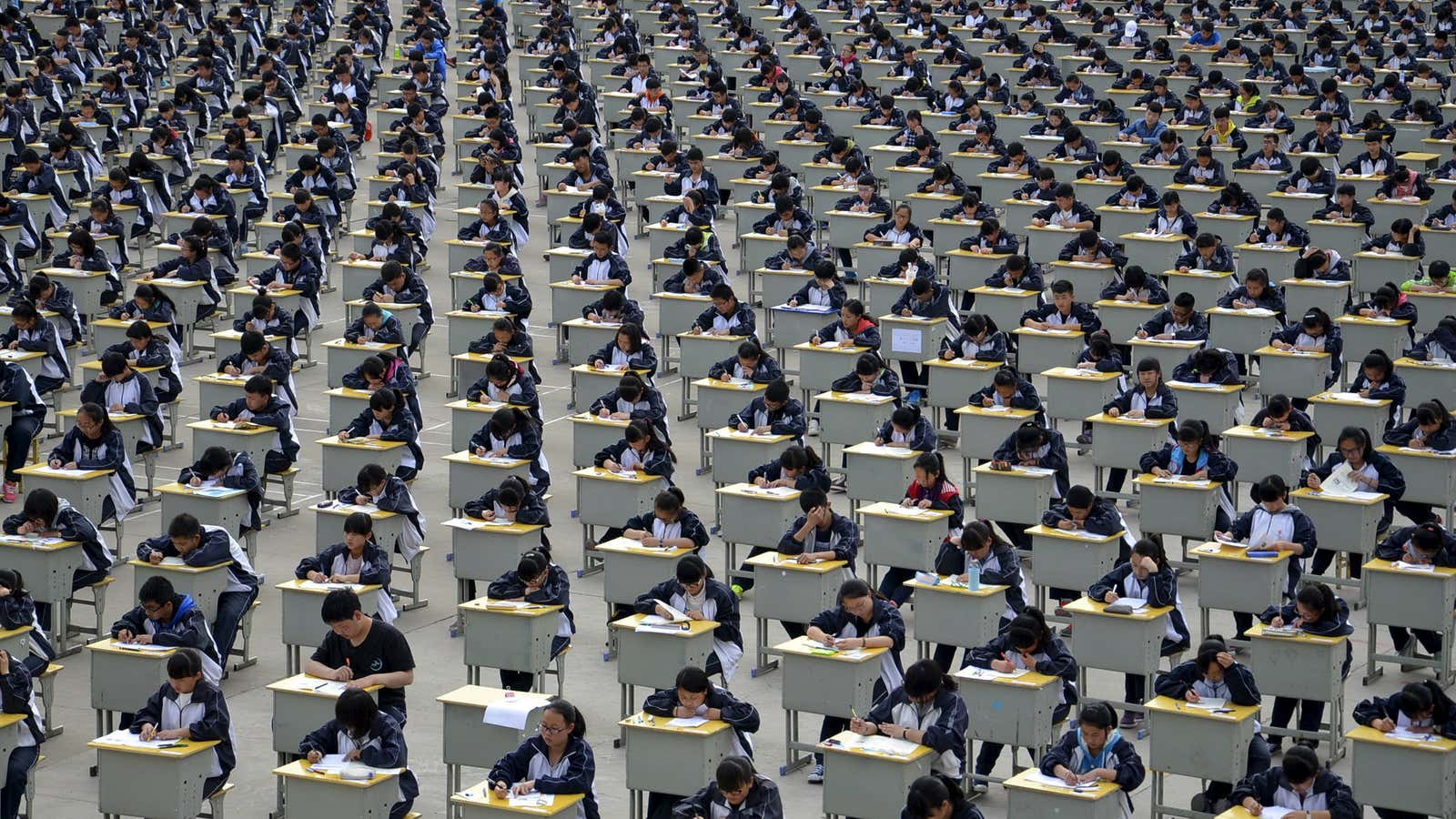In 2015, the Organisation for Economic Co-operation and Development (OECD) gave 15-year-old students in every country the same math and science test. Singapore’s teens places first. The country is so good at teaching math that its methods are now being adopted everywhere from Canada and the US to Israel and the UK.
But a video recently released by the country’s Ministry of Education hardly extols the virtues of their coveted first place rank. In fact, the three-minute video—based on a true story—about a young girl struggling with science, and her teacher’s efforts to help her, will probably make you cry.
The message? All that matters is trying your best.
The video, and changes such as how primary school kids are graded on a key exam, shows the country is trying to move beyond just mastery of high-stakes tests, to also focusing on student well-being.
“There’s a great recognition at the policy level that…we need to do better on these more important skill sets without compromising the foundations,” says Manu Kapur, a professor of psychological studies at the Education University of Hong Kong, and former head of curriculum, teaching, and learning at the National Institute of Education of Singapore.
Kapur says change is being driven, partly, by emerging evidence about the shortcomings of tests, namely that they are stressful while not always producing deep learning. Witness Shirley, age 15, in the video, whose pain at failing the test not once, but twice, is palpable. No doubt Shirley is thinking of her parents when her score goes from a 10% to a 40% and she looks despairing.
But her teacher marks her second paper with a “Well done!” in spite of the failing grade. When Shirley asks why, the teacher explains it is not just about the mark, but about trying your hardest, and making progress.
Kapur’s research, and others’, show tests measure kids ability to apply what they know, but not to generate new ideas. They measure performance in a vacuum, meaning kids are not allowed to draw on critical real-life resources like computers and the internet, and feedback from peers and other people. Also, the questions do not require persistence; they basically measure a kid’s ability to provide rapid-fire responses. In other words, these tests do not encourage the skills needed to succeed in the 21st century, like creativity, inventiveness, communication, and collaboration.
But adapting these findings into policy have been slow. Kapur says there is a belief in Singapore that small evolutions, not revolutions, are the right approach. The country recently announced that it will change how it grades its primary school leaving exam, moving from a points- based system to a “band system” which groups students into different levels of achievement (the change takes effect in 2021). The goal is to discourage parents and students from working too hard to edge up their scores by a few ticks (the exam results partially determine which school the child continues onto).
“These are tiny steps, but they are taking them,” he says.
The biggest challenge will be overcoming the ethos of achievement is so embedded in the culture of a country. Notably, parents continue to drive children hard and teachers, regardless of what they think about the impact of high-stakes tests, have to prepare kids for them. It’s what they’ve been doing for years.
“This is just an ad,” wrote one respondent to the video after it was posted on Facebook. “In reality, based on my own experiences, teachers like to put down students more than encourage them,” the person wrote, according to the BBC.
“Try convincing the parents,” wrote another.
Kapur and other Singaporean policymakers recognize these challenges. “There is nothing wrong with parents trying to do the best for their children,” Kapur says. “It’s what they value as being good. That has to change.”
That’s a lesson which policymakers, educators, and parents especially all over the world could learn.




